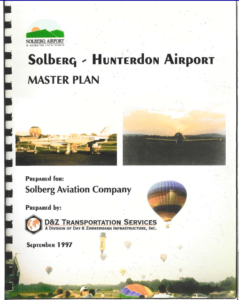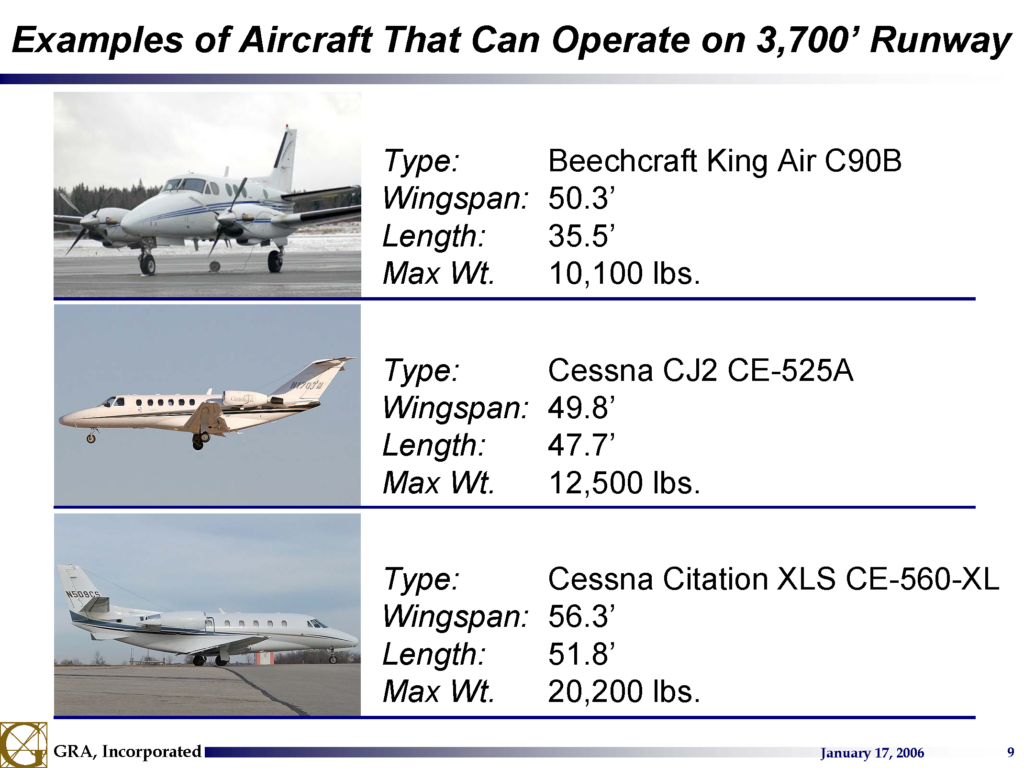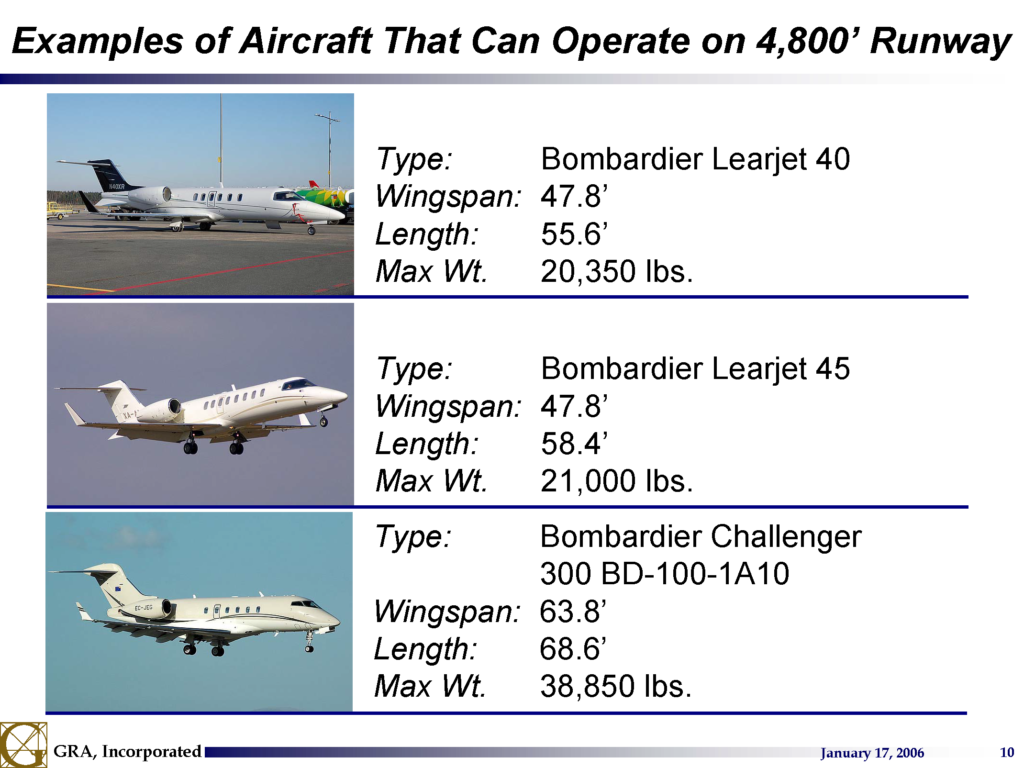The 1997 Master Plan was the first since Solberg Airport’s founding.
- Prior to 1991 the main runway (04-22) was paved to a length of 1,800 ft x 50 ft wide.
- In 1991 the main runway was extended by 66% and paved to 3,000 ft x 50 ft wide (believe funded by FAA grant). In addition to the paved 3,000 ft a turf displaced threshold of 735 ft was added at the southern end (runway 04). The crosswind runway (13-31) was turf and generally unchanged at 3,700 ft length.
 A key measure of an airport’s size is the Airport Reference Code (ARC) which, prior to the 1997 Plan, was “B-I (Small Only)”. This code defines a facility suitable for aircraft with an approach speed of less than 129 knots (148 mph) and a wingspan less than 49 ft. The designation (Small Only) sets a maximum weight limit of 12,500 lbs. The ARC target of the 1997 Master Plan is “B-II”, a seemingly benign increase in wingspan to under 79 ft, BUT removing the “(Small Only)” designation opens the facility to an entirely new group of aircraft with weights in excess of 12,500 lbs.
A key measure of an airport’s size is the Airport Reference Code (ARC) which, prior to the 1997 Plan, was “B-I (Small Only)”. This code defines a facility suitable for aircraft with an approach speed of less than 129 knots (148 mph) and a wingspan less than 49 ft. The designation (Small Only) sets a maximum weight limit of 12,500 lbs. The ARC target of the 1997 Master Plan is “B-II”, a seemingly benign increase in wingspan to under 79 ft, BUT removing the “(Small Only)” designation opens the facility to an entirely new group of aircraft with weights in excess of 12,500 lbs.While the Solbergs and Readington Township disputed the 1997 plan’s extensive airport development for over 20 years little was done as far as construction of either runways or other facilities. This delay ultimately resulted in the residents thwarting of the extensive development plan presented in 1997.
In 2021 plans for paving the existing 735 ft displaced threshold at the south end of the main runway (04-22) were brought before the Township. Because the necessary aviation authorizations were already in place work was able to begin in 2021 and the new 3,735 ft x 50 ft wide main runway opened in 2022.
While a reader of this site might expect to see documentation of court cases and Court Opinions, those actions are actuall irrelevant to the intended purpose of this site which is to create public awareness of the elements and procedures associated with creating/updating and airport’s Master Plan and Airport Layout Plan (ALP). Knowing the step-by-step progression of “airport creep”, as developed by Airport Sponsors in association with a friendly NJ-DOT, is far more useful than knowing the decisions that were made in a court room well after a frequently irreversable event occurred. With knowledge of events to come a defensive strategy can be formulated which can prove effective.


